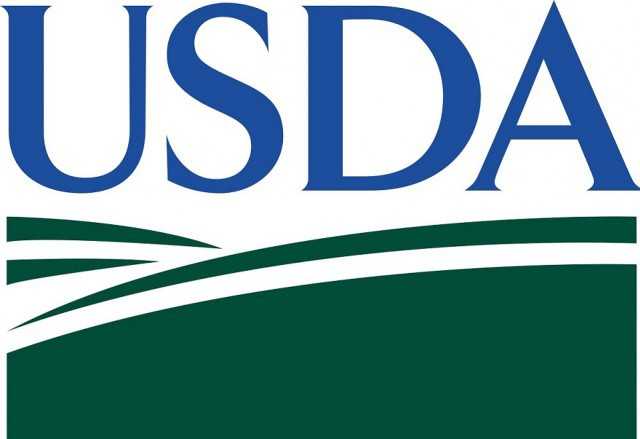MILAN – In its annual report on Indonesia, the Foreign Agricultural Service of the United States Department of Agriculture (USDA) drastically cut its estimate for coffee production in 2023/24 from 9.7 million bags to 7.65 million bags. This sharp downward revision was caused by an even worse-than-expected year for Robustas, whose production is now estimated at just 6.3 million bags, down from a figure of 8.4 million bags in the previous official USDA estimate.
This dramatic drop in production was caused by the adverse weather conditions hitting the main growing areas. On the other hand, the estimate for Arabica production was revised slightly upwards to 1.35 million. USDA expect a rebound in production for the 2024/25 crop year to 10.9 million bags s.
Production in lowland areas is expected to partially recover, while some improved yield is projected for the highland areas. Favorable weather in northern Sumatera is likely to raise Arabica crop yields for the 2024/25 harvesting period.
Due to the El-Nino-induced drought in 2023, the harvesting period in southern Sumatera is estimated to start in May-June 2024, a substantial delay from the norm (March-April). Therefore, shipments are anticipated to peak September-October 2024.
Indonesia: Crop Area
Indonesia coffee area is expected to remain stable at 1.2 million hectares, and no major replanting programs have taken place in recent years. Most coffee plantations are smallholder farms occupying about 1-2 hectares each. A few large plantations located in Sulawesi and Sumatra are owned and maintained by private companies. A state-owned company in East Java also manages a large Robusta plantation.
A recent report from Ministry of Agriculture (MOA) suggests that farmer interest in growing arabica has grown in the last decade, largely because of the lucrative price. However, arabica crops are only suitable for high altitudes.
Northern Sumatera is the main producing region of Arabica in Indonesia. Other areas with smaller production are in the high-altitude areas of Java, Sulawesi, and Papua. Sumatra accounts
for more than 60 percent of total Indonesian coffee crop area, followed by Java Island with 15 percent, and Nusa Tenggara and Sulawesi with smaller shares.
Inputs
Most of the Indonesian coffee crops are managed by smallholder farmers that generally have minimal access to fertilizer. In addition to the unavailability of fertilizer in some regions, many smallholders lack technical knowledge on proper fertilizer application.
In some areas such Lampung, smallholders often receive inputs such as fertilizers and pesticides from village-level coffee aggregators on credit to be paid off after harvest. These aggregators are often smallholder coffee farmers themselves. Smallholders heavily depend on family labor, mainly for non-harvesting activities. Harvesting is often carried out on a rotational basis between farms to spread labor costs.
Yields
Robusta coffee yields vary by region, but generally are less than one metric ton (MT) per hectare, while arabica coffee yields are slightly higher. Indonesia’s coffee crops rely on a balanced amount of sun and rain after flowering to produce optimal yields. Yields are most negatively affected by excess rain and strong winds during the cherry development stage.
Consumption
Post expects Indonesia’s 2024/25 coffee consumption to rise by 10,000 bags to 4.8 million bags on steady economic growth with continued improved performance in the food, beverage, hotel, and related sectors which drive coffee consumption. Coffee processors are likely to continue to squeeze their margins until peak robusta harvesting in the coming months.
Ready to Drink (RTD) coffee sales data shows growth in 2023 as producers continue to offer more varieties with affordable selling prices, supported by a wide range of distribution networks such as convenience stores, grocery stores, small local grocers, and kiosks.
Indonesia: Trade
Indonesia green bean exports are forecast to increase from 4.3 million bags to 6 million bags in 2024/25, as supplies are expected to rise along with the recovered production. Indonesia’s largest destination markets remain the United States, ASEAN member states combined (Malaysia, Thailand, and Vietnam), Egypt, India, and Japan. In 2023/24, green bean shipments to the United States reached 16 percent of total exports, ASEAN countries (15 percent), and Egypt (12 percent).
Shipments to EU member states accounted for 14 percent of total exports in 2023/24, a decrease of 66 percent from the previous year. The EU Deforestation Regulation (EUDR) that will come into effect at the end of 2024 is likely to affect shipments in 2024/25. The EUDR requires importers to provide due diligence statements proving their commodities are not contributing to deforestation.
Indonesia sourced robusta green beans mainly from Vietnam and arabica green beans mainly from Brazil. In 2023/24, imports from Vietnam tripled to 642,000 bags. Local roasters sourced 205,000 bags from Brazil in the same period, jumping from 86,000 bags in 2022/23, primarily for high-end customer segments. Post forecasts green bean imports at 500,000 bags for 2024/25, lower than the current year as roasters will procure more local green beans with higher local supplies.
Post revises 2022/23 green bean exports down 12 percent to 6.7 million based on corrected official data.










